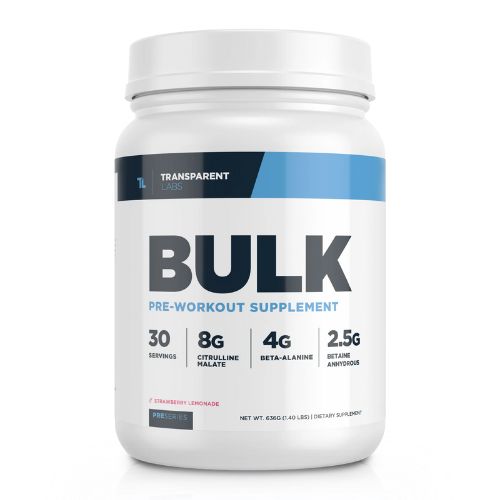7 Minute Mile: Statistics, Benefits, and Detailed Training Plan
Are you trying to improve your result up to a sub-7 minute mile? It is a challenging goal but achievable with the right training and dedication. This article will discuss a detailed training plan, strength exercises, and simple tips to help you increase your speed and stamina. Whether you’re a seasoned runner or just starting, we will help you get closer to reaching your goal of getting into a 7 minute mile pace chart.
Let’s figure out all the details together!
How to run a 7-minute mile?
If you want to improve your running game, try aiming for a 7 minute mile. Remember to rest, stretch, stay hydrated, and eat a healthy diet for better results. With a detailed training plan and perseverance, it’s a goal within reach.
Is a 7 Minute Mile Good Result?
A 7 minute mile is a good time for most people. However, what it means for you depends on your fitness level and running experience. For example, a 7 minute mile time may be impressive for a beginner runner, but it may not be considered good for a professional athlete in their prime.
Another factor that influences mile time is gender. Men tend to have a faster mile time than women, on average. According to the American Council on Exercise, a good mile time for men is between 6 and 7 minutes, while a good mile time for women is between 8 and 9 minutes. Let’s discuss the average numbers in more detail.
Average Mile Speed for 7 minute Mile
How fast is a 7 minute mile? Knowing your average mile speed is an important aspect of running. It can help you track your progress, set goals, and improve your performance.
Experience level can also play a role in average mile speed. Beginners may have a slower pace and mph than experienced runners due to factors like fitness level and training regimen. On average your pace should be about 8.6 mph for a 7-minute mile.
Below is a table that shows the average mile and kilometer times for men and women based on their experience levels. This table will help you understand how many mph a 7-minute mile is and what experience level you have.

Average Pace for men and women to run 7 minute mile
| Experience Level | Pace for Men (1 mile) | Pace for Women (1 mile) | Pace for Men (1 km) | Pace for Women (1 km) |
|---|---|---|---|---|
| Less than 6 months | 8:30 – 10:00 | 10:00 – 12:00 | 5:30 – 6:30 | 6:30 – 8:00 |
| 6 months – 1 year | 7:30 – 9:00 | 9:00 – 11:00 | 4:40 – 5:40 | 5:40 – 7:00 |
| 1 – 2 years | 6:30 – 8:30 | 8:30 – 10:30 | 4:00 – 5:20 | 5:20 – 6:40 |
| 2 – 3 years | 6:00 – 8:00 | 8:00 – 10:00 | 3:50 – 5:10 | 5:10 – 6:20 |
| 3 – 4 years | 5:30 – 7:30 | 7:30 – 9:30 | 3:30 – 4:50 | 4:50 – 6:00 |
| More than 4 years | 5:00 – 7:00 | 7:00 – 9:00 | 3:20 – 4:40 | 4:40 – 5:50 |
Tracking your average mile speed is crucial in improving your overall performance. If you notice that your average mile speed is getting faster, you are improving your running skills and fitness level. By knowing your average mile speed, you can set achievable goals for your future runs. You can also use it to evaluate your progress over time.
It is important to note that these times are just averages, and every runner is different. Your mile speed will be affected by various factors such as age, gender, weight, altitude, and weather conditions. Let’s take a closer look at those factors.
The 10 Factors Affecting Running a 7 Minute Mile
As you already know, your mile time can be influenced by several factors. Here are the main factors that can affect your mile time.
1. Current Mile Time
Your current mile time is a significant factor in determining how fast you can run a mile. If you have been running regularly and have consistently improved your mile time, for example, to 7:30 mile pace, you are likely to run a mile faster than someone who is just starting. Your current mile time can also help you determine your training pace and set realistic goals.
If you are not feeling well or are experiencing an injury, your mile time may suffer regardless of your previous record.
2. Health
Your overall health and fitness level can also impact your running mile time. If you are in good health and have a strong cardiovascular system, you are likely to be able to run a mile faster than someone who is not. Factors such as body weight, nutrition, and hydration can also affect your performance.

3. Running Experience
Running experience plays a significant role in determining your mile time. If you have been running for many years, you will likely have developed the necessary skills and techniques to run a mile efficiently. Your experience can help you maintain good form, regulate your breathing, and pace yourself correctly.
However, even if you are a beginner, you can still work on improving your running technique and form. Consistent training and practice can help you develop the necessary skills to run a mile faster and more efficiently.
4. Stride Length
Stride length refers to the distance covered in a single step while running. Longer strides can help you cover more ground faster, but this can also lead to a greater risk of injury. Finding the stride length that works best for your body type and running style is important. To improve your stride length, stretch your hip flexors and hamstrings regularly, and try incorporating regular drills such as high knees and butt kicks into your workouts.
5. Running Form
Your running form can have a significant impact on your mile time. Proper running form involves:
- Keeping your body upright.
- Maintaining a slight forward lean.
- Landing on the midfoot or forefoot.
Good form can help you run more efficiently and reduce the risk of injury. To improve your running form, focus on engaging your core muscles and keeping your shoulders relaxed. Regular strength training exercises such as planks, bridges, and push-ups can also help improve your form and prevent injuries.
6. Cardiovascular Fitness
A strong cardiovascular system is essential for running a fast mile. This means that your heart and lungs need to be able to supply enough oxygen to your muscles during exercise. Regular cardio exercise such as running, cycling, or swimming can improve cardiovascular fitness and help you run faster. To improve your cardiovascular fitness, aim for at least 30 minutes of moderate-intensity cardio exercise, such as jogging, every day.
7. Muscular Strength and Endurance
Running a mile requires strength and endurance in your leg muscles, especially your quadriceps, calves, and glutes. Strength training exercises such as squats, lunges, and calf raises can help build these muscles and improve your mile time. Incorporating plyometric exercises such as jump squats and box jumps into your workouts can also help improve your explosive power and running speed.
8. Age
Age can also play a role in your running mile time. Our muscles tend to weaken as we age, and our cardiovascular system may not function as efficiently. However, regular exercise can help slow down these effects and keep you fit and healthy regardless of age. Aim for a balanced exercise routine that includes cardio and strength training exercises to stay fit and healthy as you age.

9. Terrain
The type of terrain you run on can also affect your mile time. Running on flat even surfaces such as a track or treadmill can be faster than running on hills or uneven terrain. This is because hills require more effort and can slow you down. To improve your hill running, incorporate hill repeats into your workouts and focus on engaging your glutes and driving your knees toward your chest.
10. Weather Conditions
Finally, weather conditions like heat, humidity, and wind can also affect your mile time. Hot and humid weather can make running more difficult by increasing your heart rate and making breathing harder. Wind can also slow you down, especially if it blows against you. Wear breathable, moisture-wicking clothing to run your best in hot weather and stay hydrated. Try running with a slightly lower head position and leaning into the wind in windy conditions.
Subscribe to Our Running Newsletter!
Get free running tips from renowned professional athletes and discounts from top-notch brands.
How to Start Running a 7 Minute Mile
Achieving a 7-minute mile requires several steps to follow. Let’s discuss how to increase your running results.
8-week Training Plan for Sub 7 Minute Mile
To achieve a 7-minute mile time, you must have a consistent training plan focusing on speed and endurance. Here is a sample plan you can use:
| Week | Monday | Tuesday | Wednesday | Thursday | Friday | Saturday | Sunday |
|---|---|---|---|---|---|---|---|
| 1 week | Strength training | 2-mile tempo run | Rest | 4x400m intervals | Rest day | 3-mile easy run | Rest day |
| 2 week | Strength training | 2-mile tempo run | Rest | 5x400m intervals | Rest day | 4-mile easy run | Rest day |
| 3 week | Strength training | 3-mile tempo run | Rest | 6x400m intervals | Rest day | 5-mile easy run | Rest day |
| 4 week | Strength training | 3-mile tempo run | Rest | 7x400m intervals | Rest day | 5-mile easy run | Rest day |
| 5 week | Strength training | 4-mile tempo run | Rest | 5x500m intervals | Rest day | 6-mile easy run | Rest day |
| 6 week | Strength training | 4-mile tempo run | Rest | 5x500m intervals | Rest day | 6-mile easy run | Rest day |
| 7 week | Strength training | 5-mile tempo run | Rest | 4x600m intervals | Rest day | 7-mile easy run | Rest day |
| 8 week | Strength training | 5-mile tempo run | Rest | 5x800m intervals | Rest day | 7-mile easy run | Rest day |
It is important to gradually increase your distance and speed. Don’t push yourself too hard too soon, as this can lead to injury. Remember to warm up before every workout and cool down afterward.
5 Best Strength Exercises to improve Your Running Routine
Running a 7-minute mile requires strength and stamina. Incorporating strength exercises into your training plan can help you achieve your goal. Here are five exercises you can try:
1. Squats
This exercise targets your legs and glutes, which are essential for running. Start with three sets of 10 reps and gradually increase the weight.
2. Lunges
Lunges target your legs and improve your balance. Start with three sets of 10 reps on each leg.
3. Planks
Planks improve your core strength, which is important for maintaining good form while running. Start with three sets of 30 seconds and gradually increase the time.
4. Deadlifts
Deadlifts work your hamstrings and lower back, which are important for running uphill. Start with three sets of 10 reps and gradually increase the weight.
5. Push-ups
Push-ups work your chest, shoulders, and triceps, which helps you maintain good posture while running. Start with three sets of 10 reps and gradually increase the reps.
4 Must-Follow Tips For a Healthy Diet
Your diet plays an important role in your running performance. Fueling your body with the right nutrients can help you run faster and longer. Here are some foods you should include in your diet:
1. Carbohydrates
Carbs provide energy for your body. Good sources of carbs include whole grains, fruits, and vegetables.
2. Protein
Protein helps repair and build muscle tissue. Good protein sources include lean meats, fish, beans, and nuts.
3. Healthy fats
Healthy fats provide long-lasting energy and improve your overall health. Good sources of healthy fats include avocados, nuts, and seeds.
4. Hydration
Staying hydrated is important for running performance. Drink plenty of water throughout the day and before and after your workouts.
Transparent Labs BULK Pre Workout
The Transparent Labs Pre-workout energy powder does no artificial additives and ideal for elevating your workout intensity and maximizing training results.
Pros:
- Full ingredient transparency.
- No artificial sweeteners or colors.
- Can choose with stimulant or non-stimulant options.
Cons:
- The taste may not suit everyone.
Pros and cons of 7-Minute Mile
Running a 7-minute mile is a significant accomplishment for many runners. However, like any physical activity, there are pros and cons to consider before making it a regular habit.
Pros
- 1. Improved Endurance
Running a mile in 7 minutes requires a lot of cardiovascular endurance. Consistently training at this pace will improve your overall endurance, allowing you to run further and faster than before. - 2. Increased Metabolism
Running at a fast pace, like a 7-minute mile, can increase your metabolism, which means your body will burn more calories even when you’re not running. This can be helpful for weight loss or weight management. - 3. Mental Benefits
Running can have many mental benefits, including reducing stress, improving mood, and increasing focus. Running a 7-minute mile can be a great way to challenge yourself mentally and reap these benefits.
Cons
- 1. Risk of Injury
Running at a fast pace can put a lot of stress on your joints and muscles, increasing the risk of injury. Training properly and listening to your body to avoid injury is important. - 2. High Intensity
Running a 7-minute mile is considered a high-intensity workout. It can be challenging, especially for beginners, and may not be suitable for everyone. - 3. Burnout
Training at a fast pace can be demanding and lead to burnout if not managed properly. It’s important to listen to your body, take rest days, and avoid overtraining.
Frequently Asked Questions about Running a Mile in 7 Minutes
How Many Calories Does a 7-minute Mile Burn?
Running a 7-minute mile can burn around 80-140 calories. However, the amount of calories burned will vary based on individual factors. For example, a person who weighs more can burn more calories than the one who weighs less while running the same distance at the same speed.
How Many Miles a Week Should You Be Running to Run a 7-minute Mile?
Experts recommend a minimum of 20 miles per week of running to significantly improve running speed and endurance. However, if you’re looking to run a 7-minute mile, you may need to increase your mileage to at least 30 miles per week.
Final Thoughts on 7-Minute Mile
Running a 7-minute mile is a challenging but achievable goal. If you are a beginner runner looking to improve your mile time, following a consistent training schedule, building endurance gradually, incorporating interval training, and taking rest days are all excellent ways to achieve your goals.
Following a structured training plan and fueling your body with the right foods can improve your running performance and help you reach your goal. Stay consistent, listen to your body, and enjoy the process!
What is your average mile time? Please share your experience in the comments below!
Also read:
- Losing Weight to Run Faster
- Why Do My Ribs Hurt After Running
- Running 7 Miles a Day
- Sub 20 5K Training Plan
- Benefits of Running With Ankle Weights
- How Long Is a 10K in Miles
- Does Running Build Leg Muscle
- How to Lower Heart Rate While Running
References:
- What is the average time to run a mile? // Medical News Today: https://www.medicalnewstoday.com/articles/326263#average-mile-time
- Influence of stride frequency and length on running mechanics: a systematic review // PubMed: https://pubmed.ncbi.nlm.nih.gov/24790690/
- Cardiovascular aspects of running // PubMed: https://pubmed.ncbi.nlm.nih.gov/3902253/
- The relationship between age and running time in elite marathoners is U-shaped // PMC: https://www.ncbi.nlm.nih.gov/pmc/articles/PMC4039284/
- Effects of Running-Specific Strength Training, Endurance Training, and Concurrent Training on Recreational Endurance Athletes’ Performance and Selected Anthropometric Parameters // PMC: https://www.ncbi.nlm.nih.gov/pmc/articles/PMC9518107/
- Injuries in Runners; A Systematic Review on Risk Factors and Sex Differences // PMC: https://www.ncbi.nlm.nih.gov/pmc/articles/PMC4338213/
If you have any questions or suggestions, you can contact us via email – [email protected]








This is not the first time I’ve read your articles, and I’m impressed with your detailed articles and free workout plan. Thank you for sharing your passion for running with your followers!